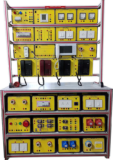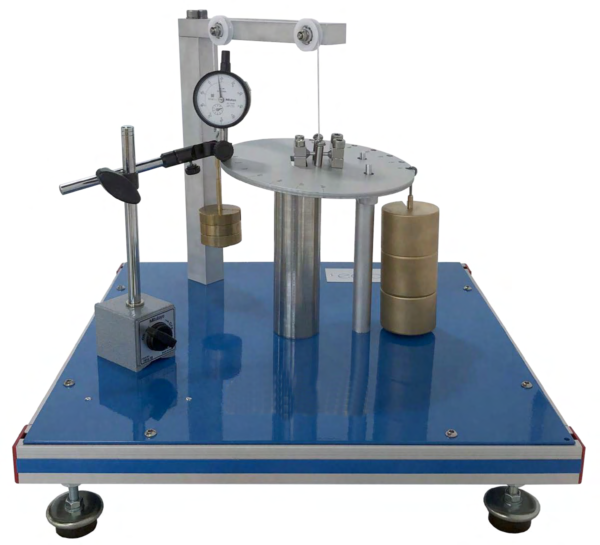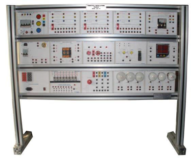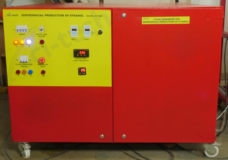Verification of Stress Hypothesis Model MT 140
Home » Products » Verification of Stress Hypothesis Model MT 140
Verification of Stress Hypothesis Model MT 140
Sci-tech Verification of Stress Hypothesis Model MT 140 is used to verify these comparative stress hypotheses on test specimens made of various metals. For the purpose, a multi-axial stress state is produced at a point on the specimen and the resulting deformation is measured. The specimen is clamped on one end to the fixed frame. A loading plate is clamped to the specimen on the other end. A weight is attached on the outer circumference of the plate. A balance weight compensates for the dead-load of the plate and the applied weight. As a result only direct and shearing stress occur at a point on the test specimen and shear forces are avoided. The loading plate has a graduation grid enabling weights to be attached at 15° increments. This permits purely bending moment and twisting as well as combined load moments to be achieved. Diametrically opposite the weight, measuring points are provided on the loading plate to measure the deformation. This enables the deformation at the point of maximum deflection to be measured.
| Size: | 40cm x 36cm x 40cm (LxWxH) |
| Weight: | 20 kg |
Item Description
Features
- Verification of the Rankine yield criterion and the Tresca yield criterion.
- Multi-axial loads of test specimens made of ductile metals by pure bending, pure torsion or a combination of the two.
- Loading of the test specimen without shear force by compensation for the influence of dead-load
Stress hypotheses are applied in the science of the strength of materials when calculating comparative stresses where unequal stresses are combined.
The following stress hypotheses, taking into account material properties, have been tried and proven in practice: Rankine yield criterion (direct stress hypothesis), von Mises yield criterion (change of shape hypothesis) and Tresca yield criterion (shear stress hypothesis).
Sci-tech Verification of Stress Hypothesis Model MT 140 is used to verify these comparative stress hypotheses on test specimens made of various metals. For the purpose, a multi-axial stress state is produced at a point on the specimen and the resulting deformation is measured.
The specimen is clamped on one end to the fixed frame. A loading plate is clamped to the specimen on the other end. A weight is attached on the outer circumference of the plate. A balance weight compensates for the dead-load of the plate and the applied weight. As a result only direct and shearing stress occur at a point on the test specimen and shear forces are avoided.
The loading plate has a graduation grid enabling weights to be attached at 15° increments. This permits purely bending moment and twisting as well as combined load moments to be achieved. Diametrically opposite the weight, measuring points are provided on the loading plate to measure the deformation. This enables the deformation at the point of maximum deflection to be measured.
The various elements of the experiment are clearly laid-out and housed securely in a storage system.
See also different:

Sci-tech Electrical Lighting Installation Trainer Model ELTR 017 is designed to provide student with a good foundation in electrical technology and to prepare them for career as an installation/service technician. The system consists of a numb [...]



